Physical Address
304 North Cardinal St.
Dorchester Center, MA 02124
Developmental renal artery and abdominal aortic disease is complex and the underlying pathogenesis in the majority of cases is poorly understood. Nevertheless, certain contributing factors are well recognized and the treatment of most lesions has become better defined in the past few decades. The majority of children will benefit from appropriately planned and performed interventions, either endovascular or open surgical procedures, when undertaken in properly selected individuals.
Abdominal aortic coarctation was first described by Quain in 1847. It was considered an oddity until it was more frequently recognized as aortic imaging evolved in the latter years of the 20th century. In recent decades it has become known as the middle aortic syndrome (MAS) or midaortic syndrome, and its anatomic character became important in clinical practice. A contemporary classification of developmental abdominal aortic coarctation is based on the most cephalad extent of the affected aorta. This distinguishes suprarenal (69%) from intrarenal (23%) and infrarenal (8%) narrowing ( Figs. 132.1–132.3 ). These coarctations occur as limited focal or segmental narrowing and are to be differentiated from diffuse aortic hypoplasia, which is often considered separately. ,
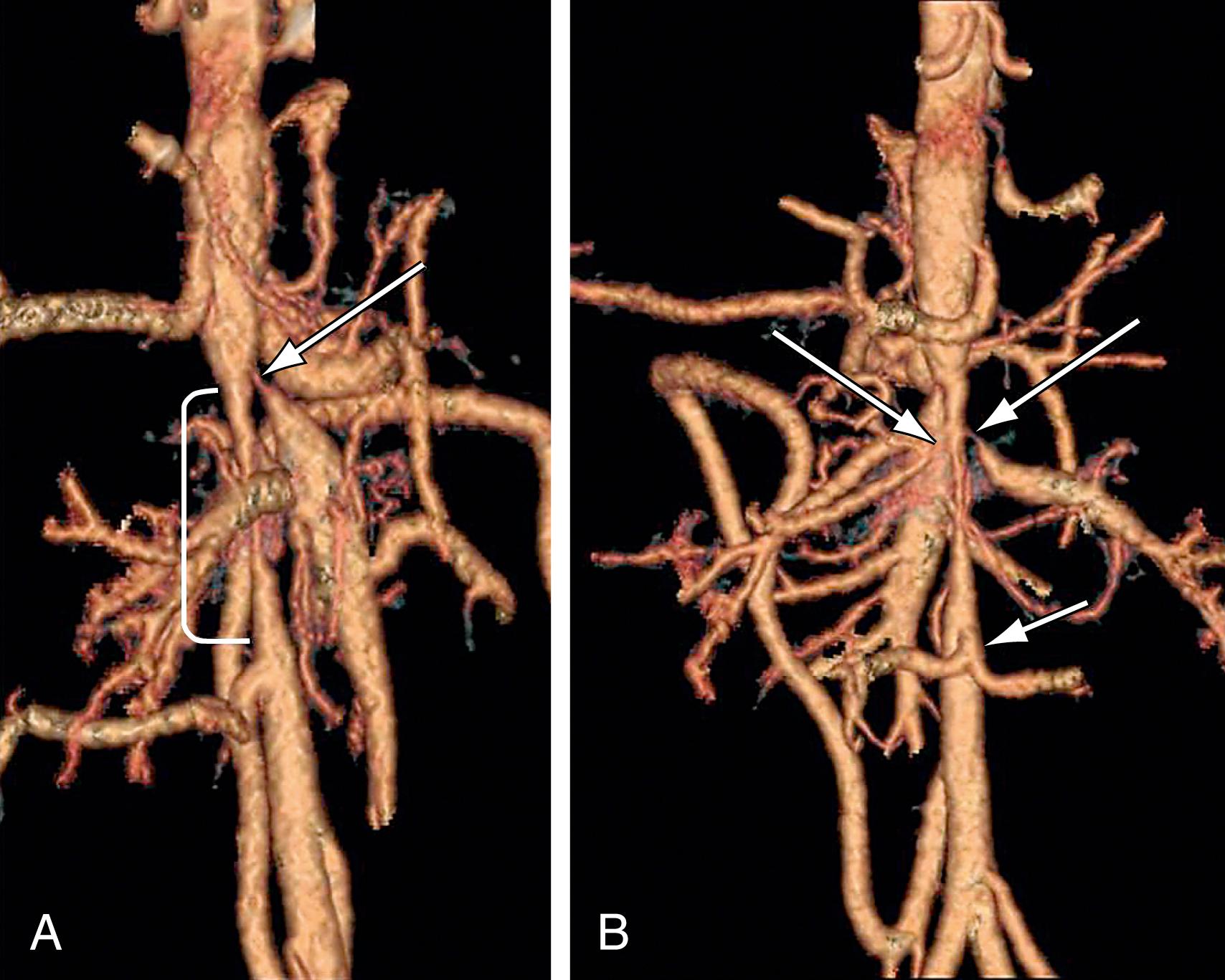
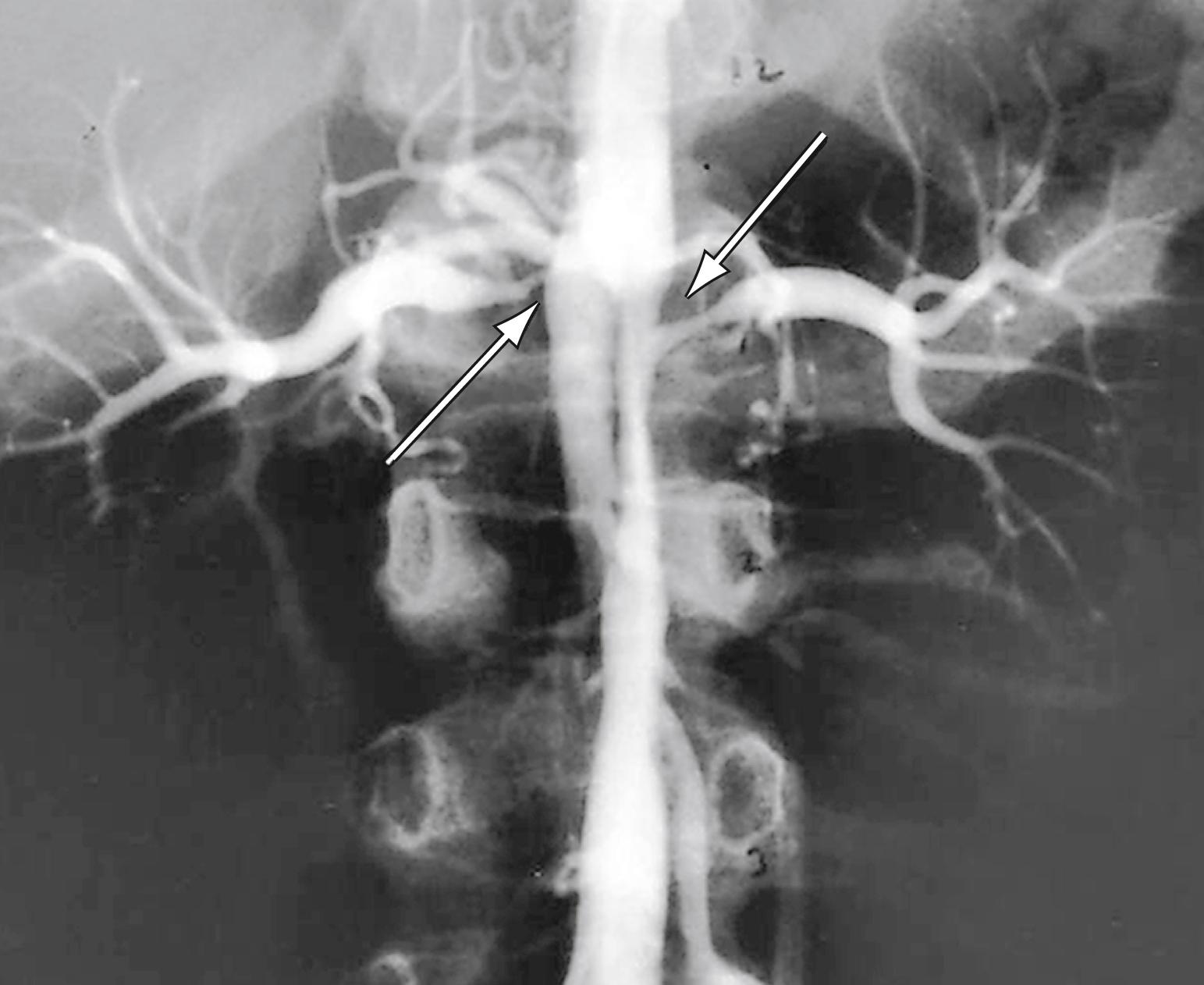
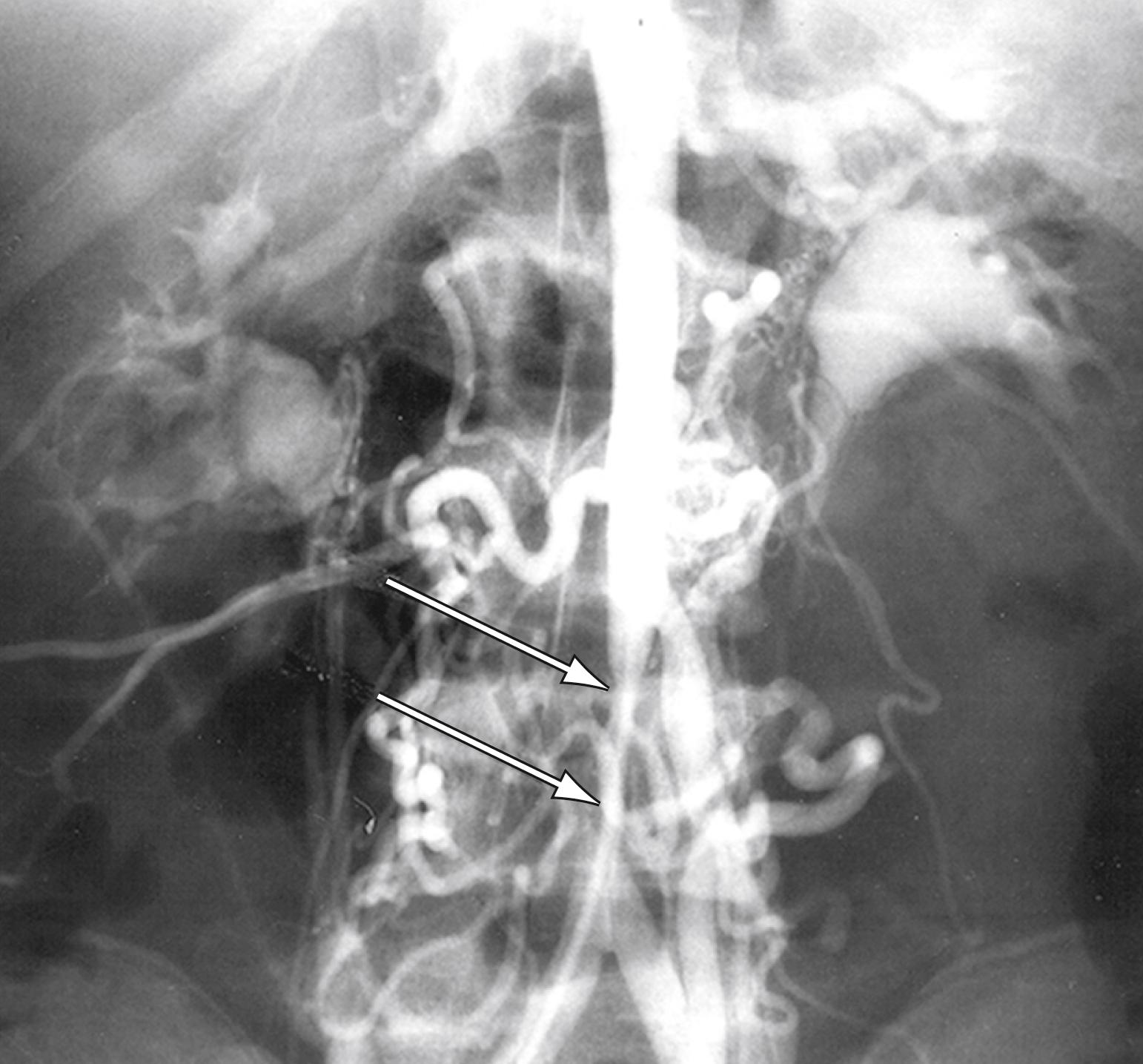
Overfusion of the two dorsal aortas during the fourth week of gestation is thought to be the cause of most developmental abdominal aortic coarctations. Prior to this event, both dorsal aortas normally extend along the entire length of the fetus, with each segment of the paired aortas containing dorsal intersegmental, lateral segmental, and ventral segmental branches. As the two dorsal aortas fuse, these branches persist, involute, or join together to form the named aortic branches found at birth.
In support of the overfusion theory is the loss of paired lumbar arteries within the narrowed aortic segment, with only a single lumbar artery trunk exiting the dorsal aorta. , A developmental etiology for aortic hypoplasia is also supported by the frequent presence of multiple renal arteries to one or both kidneys compared to the general population. , , It is known that aortic development occurs concurrent with the involution of multiple metanephric arteries to leave a single renal artery to each kidney in the majority of fetuses. It is plausible that developmental aortic coarctations cause flow disturbances near what would usually be the principal renal artery; this diminishes its hemodynamic advantage and allows adjacent metanephric channels to persist as multiple polar or accessory renal arteries ( Fig. 132.4 ).
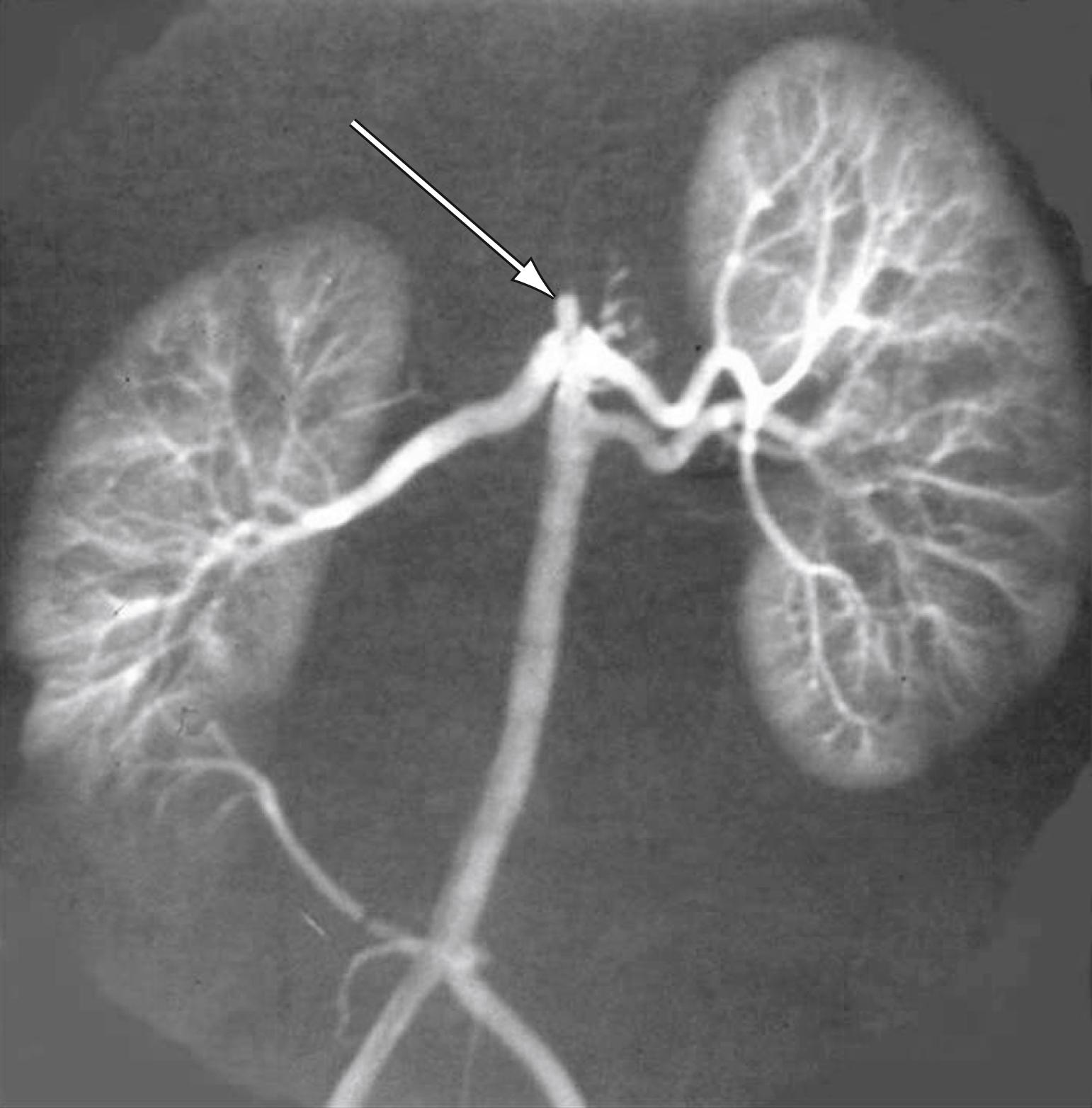
Certain genetic syndromes have been associated with abdominal aortic coarctations. The most frequent is neurofibromatosis-1 (NF-1). , , Others include Williams syndrome, Alagille syndrome, , and tuberous sclerosis. , It is theorized that each of these diseases inhibit cell growth or cause cellular death of vascular tissues during fetal development.
The NF-1 phenotype is highly variable, and a wide spectrum of vascular involvement exists, including aneurysms, arteriovenous malformations, cardiac valvular anomalies, and direct neural tumor invasion or compression of vascular structures. However, hypertension due to renal artery stenotic disease or abdominal aortic narrowing is the most common vascular manifestation of NF-1. It is difficult to find a unifying cause for this phenotype of NF-1, although the influence of modifying genes in addition to a primary NF-1 mutation, as well as alterations in the tissue-specific elastin gene transcription, may play a role. , In our experience, more than 25% of patients with abdominal aortic coarctation or hypoplasia carry a confirmed diagnosis of NF-1. Among patients with NF-1-related vascular involvement, 13% exhibited abdominal aortic coarctations.
Takayasu aortoarteritis is a well-recognized inflammatory cause of abdominal aortic coarctation that in its quiescent phase must be differentiated from developmental narrowings, although it is more likely to involve the aortic arch and proximal descending thoracic aorta. Such an aortoarteritis may be the most common cause of abdominal aortic narrowings encountered in the subcontinents. Maternal rubella during the first trimester is an infectious disorder that has been associated with abdominal aortic hypoplasia. The cellular destruction properties of the virus responsible for rubella may eliminate certain vascular cells needed for normal aortic and arterial growth. Nondevelopmental abdominal aortic coarctation has also been associated with umbilical artery catheterization during the neonatal period, although aortic thromboses and mycotic aneurysms have been reported more frequently than aortic narrowings. ,
Abdominal aortic coarctations are associated with stenoses of the splanchnic and renal arteries, in 87% and 62% of cases, respectively. Most of these stenoses in North American Caucasian children are developmental, , , compared with the inflammatory aortoarteritis and Takayasu-related stenoses encountered in Asia, Africa, and South America. The underpinnings of the developmental arterial stenoses appear to be the same as those causing abdominal aortic coarctations, , and that many of these patients have NF-1. , ,
The vast majority of developmental renal artery narrowings are ostial in location, representing true arterial hypoplasia. These arteries are very small, with one report documenting external and luminal diameters of the stenotic ostial segments in children with renovascular hypertension averaging 2.2 mm and 0.4 mm, respectively. These are very abnormal arteries, exhibiting intimal fibroplasia, internal elastic lamina disruptions, diminutive and discontinuous media, and excessive adventitial elastin ( Fig. 132.5 ).
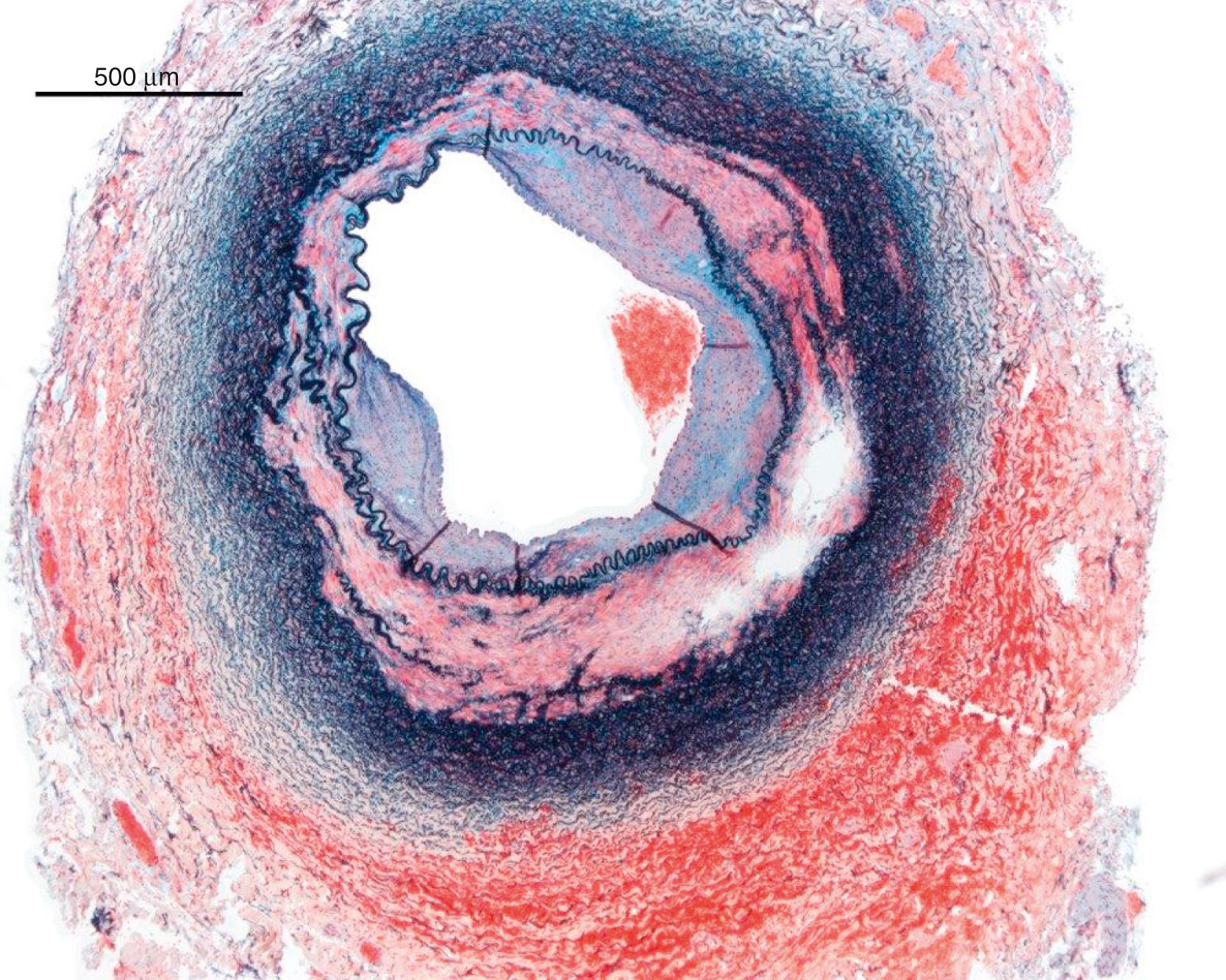
Similar ostial stenoses of the celiac artery (CA) and superior mesenteric artery (SMA) also occur in areas of abdominal aortic coarctations ( Fig. 132.6 ). These stenotic narrowings usually are recognized during studies for suspected aortic or renal artery pathology. Their etiology appears related to embryonic phenomena affecting the reorganization of the ventral segmental vessels associated with the cephalic roots of the vitelline arteries that normally form the CA and SMA.
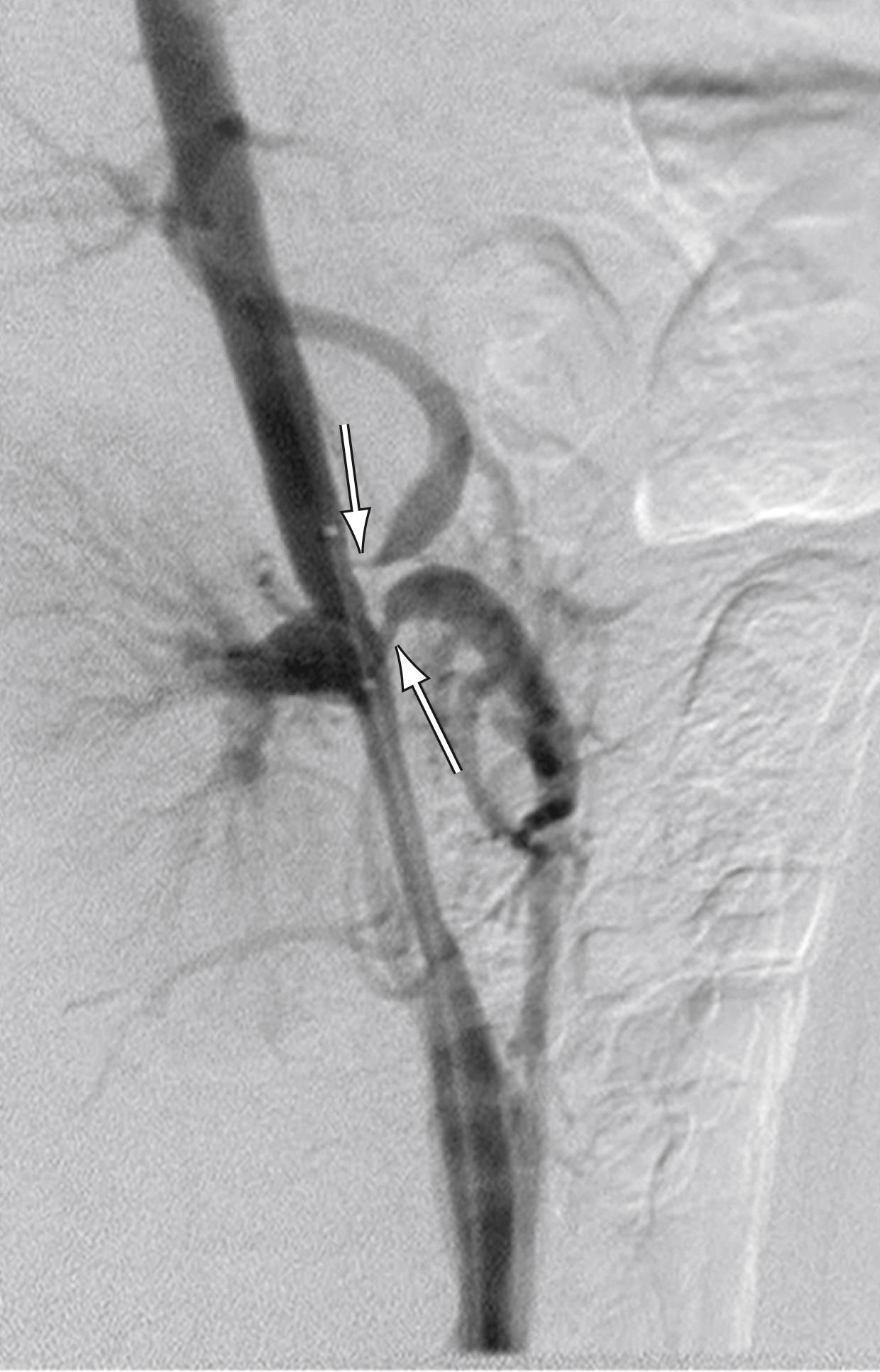
Certain renal, CA, and SMA stenoses that are not critical at a young age may exhibit limited growth. It is believed that these vessels may not grow as the child grows. In such circumstances, the artery’s origin becomes proportionately narrower as the adjacent renal or splanchnic artery becomes bigger, until the narrowing represents a critical stenosis. This entire process suggests a major growth arrest of the aortic origins of the arteries supplying blood to the kidney and intestine.
Renal artery occlusive disease is the third most common cause of pediatric hypertension, ranking behind parenchymal renal disease and coarctation of the thoracic aorta. The exact incidence of renovascular hypertension as a cause of childhood hypertension is unknown, but is likely to account for 8% to 10% of those exhibiting marked elevations of their blood pressure. In this regard, renovascular disease accounts for a much larger proportion of hypertension in children than it does in the adult population.
Hypertension due to suprarenal or intrarenal aortic narrowings may be compounded by occlusive lesions of the renal artery. The resulting secondary hypertension in these cases is often refractory to simple pharmacologic control. Presentations of such patients who are receiving three or more antihypertensive agents are commonplace. Lower extremity fatigue with exercise due to abdominal aortic narrowing has been reported infrequently as the presenting complaint, and true claudication is rare. ,
Despite the high rate of CA and SMA occlusive involvement with developmental narrowing of the abdominal aorta, symptomatic intestinal ischemia affects only 6% of these cases. However, when these children do have functionally relevant splanchnic arterial narrowings, they present with postprandial intestinal angina manifest by periumbilical discomfort that lasts for the duration of small bowel transit of ingested food. These children develop an aversion for food (sitophobia) and exhibit weight loss from a failure to eat.
Most children with renovascular hypertension are asymptomatic. If they do become symptomatic, initial manifestations are varied including: headache, seizure, epistaxis, and visual disturbances. An isolated facial nerve paralysis (Bell’s palsy) is an uncommon presentation, usually occurring with severe blood pressure elevations. ,
Chronic childhood renovascular hypertension may arrest kidney growth and cause chronic renal insufficiency. Hemorrhagic stroke, hypertensive encephalopathy with impaired cognitive development, and failure to thrive may occur in unrecognized and untreated children with hypertension. , Poorly controlled hypertension also may result in severe diastolic dysfunction and left ventricular hypertrophy (LVH). The resulting hypertensive cardiomyopathy can progress to heart failure. If the entire renal mass is involved, flash pulmonary edema associated with renal insufficiency may occur, although it is an uncommon complication.
Become a Clinical Tree membership for Full access and enjoy Unlimited articles
If you are a member. Log in here